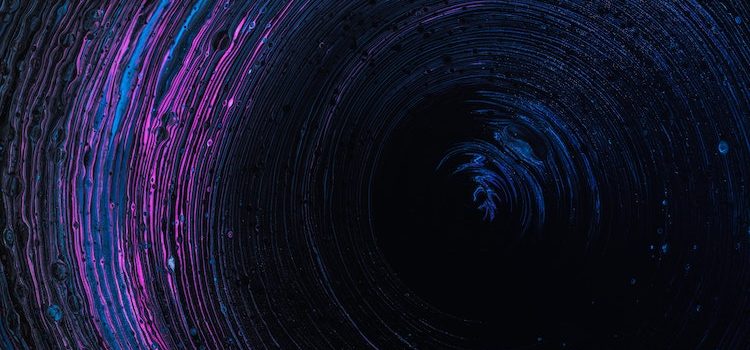

This article is an excerpt from the Shortform book guide to "A Brief History of Time" by Stephen Hawking. Shortform has the world's best summaries and analyses of books you should be reading.
Like this article? Sign up for a free trial here .
What causes a black hole? How do we know black holes actually exist?
In his book A Brief History of Time, Stephen Hawking discusses black holes—what they are, what causes them, and whether they actually exist. He also explores the possibility that primordial black holes exist, suggesting that black holes might have more than one cause.
Read on to learn about black holes.
Hawking on Black Holes
Before we address what causes a black hole, let’s discuss what a black hole is. Hawking explains that a “black hole” is an object with such strong gravity that its gravity can trap light. Moreover, according to Hawking, the theory of general relativity implies that nothing can travel faster than light, so if light can’t escape from a black hole, then nothing can.
Since the black hole would trap light instead of emitting or reflecting it, it would be completely black. That said, Hawking predicts that black holes would appear to emit a small amount of radiation that’s actually produced outside the black hole, just far enough away that it can escape (this is known as “Hawking radiation”). To facilitate our discussion of black holes, we’ll start by introducing some terminology. Then we’ll discuss where black holes come from in the first place.
Black Hole Nomenclature
General relativity predicts that there is a singularity at the center of a black hole, where all of the object’s mass is concentrated in an infinitely small, infinitely dense point. Furthermore, since there is a correlation between density and gravity, and between gravity and the curvature of space, space-time itself becomes infinitely curved at that point.
Hawking points out that the closer you get to an object, the more its gravity pulls on you. Thus, if light passes too close to a black hole, it gets pulled in. The threshold where light gets trapped forms an imaginary surface around the black hole called the “event horizon.”
(Shortform note: It’s called an “event horizon” because you can’t observe events that happen beyond it. Light from an event has to reach you for you to observe the event, and light that passes inside the event horizon can’t reach you because it can’t escape from the gravity of the black hole.)
Thus, Hawking notes that scientists refer to the “size” or “area” of a black hole as the size of its event horizon, which encloses a finite area, even though all the matter in a black hole is concentrated in the singularity, which is infinitely small.
(Shortform note: The diameter of a black hole’s event horizon varies anywhere from smaller than a speck of dust (for the smallest “primordial” black holes, which we’ll discuss shortly) to the size of our entire solar system, depending on the mass of the black hole. However, astronomers have not yet developed telescopes powerful enough to visually measure the size of the event horizon of any known black hole, so all black hole sizes reported to date are simply calculated based on the mass of the black hole in question.)
What Causes a Black Hole?
Hawking explains that most black holes form from collapsing stars. Stars, in turn, form from clouds of gas called nebulas. Eventually, gravity causes part of a nebula to collapse in on itself. As the gas gets compressed by gravity, it heats up. When it gets hot enough, it begins to undergo nuclear fusion, which releases energy (the same energy released by a hydrogen bomb). The energy released by nuclear fusion halts the gravitational collapse, and the star maintains a certain size for the stable part of its life.
(Shortform note: Nuclear fusion is when the nuclei of two atoms merge to form a new, heavier atomic nucleus. When light atoms like hydrogen and helium combine, this process releases energy. But, for atoms heavier than iron, nuclear fusion actually consumes energy, so a star runs out of energy when all of its lighter elements have been fused into heavier ones.)
Eventually, the star burns up all of its nuclear fuel. According to Hawking, when the star runs out of fuel, its gravity causes it to start contracting again. If this doesn’t trigger a supernova explosion, the star continues to contract until either nuclear forces counterbalance its gravity or it collapses into a singularity and forms a black hole. The mass of the star determines how much gravity it has, and thus determines whether or not nuclear forces can counterbalance its gravity. Stars larger than a certain size become black holes, while smaller stars become dwarf stars, because they didn’t have enough gravity to trigger the formation of a black hole.
(Shortform note: Hawking mentions supernova explosions in passing, but doesn’t really explain them. Supernovae happen because nuclear fuel is usually not distributed uniformly throughout a star, so the whole star doesn’t run out of fuel at once. Nuclear fusion doesn’t happen uniformly throughout the star either. Instead, fusion happens mostly in the core of the star, where it is denser and hotter. Sometimes, the core of a star will run out of fuel and start to collapse while there’s still plenty of hydrogen and helium closer to the surface that isn’t currently hot enough to fuse. As the star begins to collapse, the lighter elements heat up and start to undergo nuclear fusion. In some cases, this causes so many light elements to fuse at once that the sudden release of energy blows the star apart.)
Do Black Holes Actually Exist?
According to Hawking, the existence of black holes was predicted by theory and has now been confirmed by observation. He asserts that they were first hypothesized in the 1780s, based on the predictions of Newtonian mechanics.
(Shortform note: Hawking doesn’t elaborate on exactly how Newtonian mechanics predicted the possibility of black holes, but in Newtonian mechanics, “escape velocity” is the speed that an object needs in order to escape the pull of gravity (typically disregarding factors like air resistance). If you had a stellar object with such strong gravity that the escape velocity exceeded the speed of light, you would have a black hole.)
Hawking also explains that, although astronomers can’t see black holes, they can observe their effects on stars and other visible objects. He recounts that the first such observation of a black hole was in the Cygnus X-1 system, where a star orbits around an unseen object. Based on the star’s orbit, they calculate that the unseen object is about six times the mass of our sun, meaning that, as a star, it would have had enough gravity to form a black hole when it ran out of fuel.
(Shortform note: Since the publication of the book, astronomers have identified many other black holes or likely black-hole candidates.)
Black Holes Leftover From Wrinkles in Space-Time
While he says most black holes form from collapsing stars, Hawking suggests that there could be other black holes that formed shortly after the big bang due to irregularities in space-time.
(Shortform note: We infer from Hawking’s discussion of general relativity that these wrinkles in space-time would have gravity, which would attract matter to them. The more mass they accumulated, the stronger their gravity would become, until they collapsed into singularities.)
According to Hawking, theoretical calculations predict that these “primordial” black holes are relatively few and far between. At the time he wrote the book, astronomers had not identified any objects that fit the description of a primordial black hole.
(Shortform note: Scientists have not confirmed the existence of any primordial black holes since the publication of the book either. However, astronomers recently hypothesized that there could be a primordial black hole within our own solar system. Specifically, observed abnormalities in the orbits of asteroids could be explained by a black hole with an event horizon a few inches across weighing about ten times as much as the earth orbiting the sun somewhere beyond the orbit of Neptune.)
Recap
Basically, a black hole is a star that runs out of nuclear fuel and succumbs to a runaway gravitational collapse, such that it collapses into a “singularity,” where all its mass is confined to an infinitely small point. There’s a finite area around the singularity where its gravity is so strong that it can capture light. The boundary of this area is called the “event horizon” because you can’t observe any event that happens inside it, since light from the event can’t reach you.
Theoretically, quantum fluctuations just outside the event horizon give black holes a faint glow. This is called “Hawking radiation.”

———End of Preview———
Like what you just read? Read the rest of the world's best book summary and analysis of Stephen Hawking's "A Brief History of Time" at Shortform .
Here's what you'll find in our full A Brief History of Time summary :
- The search for a theory that explains the history and evolution of our universe
- Stephen Hawking's discussions about time, space, dimensions, and quantum theory
- How time travel would theoretically work






